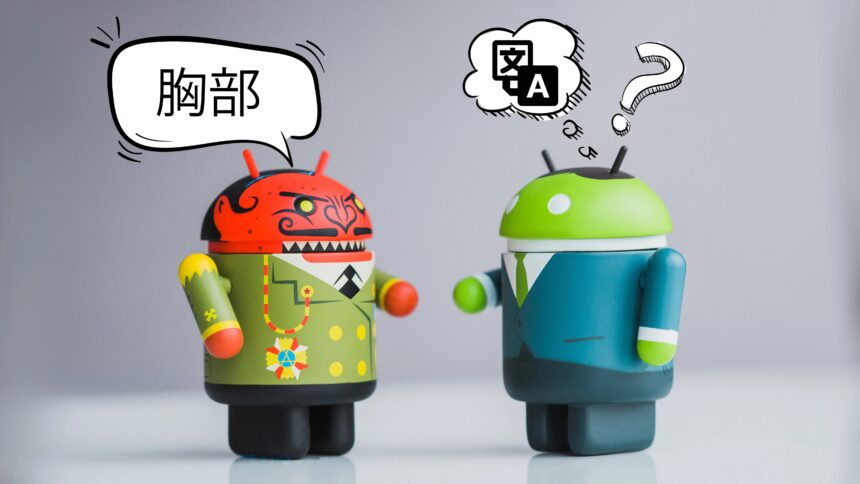Imagine reaching an audience halfway across the world, without even leaving your desk – that’s what audio translation does for you. Whether you’re a content creator, podcaster, filmmaker, or simply enjoy making videos as a hobby, translating your audio can quickly transform your content into a multilingual passport.
Imagine reaching an audience halfway across the world, without even leaving your desk – that’s what audio translation does for you. Whether you’re a content creator, podcaster, filmmaker, or simply enjoy making videos as a hobby, translating your audio can quickly transform your content into a multilingual passport.
Why translate your content?
Creating fresh video content on a regular content basis can be overwhelming, and gets even more frustrating when it doesn’t do as well as you’d hoped. To improve your chances, you might consider starting over with a different video, but sometimes that just adds fuel to the fire (hint: the fire is your burnout).
An easier and more productive use of your time would be to look for an audio translator. Here’s why:
It maximizes your reach
Let’s start with the most obvious benefit: translating your videos unlocks new audiences across different countries and cultures, and opens the door for thousands, if not millions of viewers who would otherwise not have access to your content.
It deepens connections with your audience
It’s a known fact that speaking your viewers’ language builds trust and loyalty. Without any language barriers hindering their experience, people feel more comfortable watching your content and are more likely to come back for more.
It unlocks new opportunities
With an audio language translator, you’re not only extending your content “shelf life”, but you’re also creating new ways of repurposing it. Your translations (whether they’re in written or audio form) can be used for voiceovers, podcasts, or social media content.
How to pick the best voice translator online?
A good audio translator can do wonders for you, while a poorly designed one can actually make your life more difficult. It’s important to know what features to prioritize when looking for a tool to translate audio from video, so here’s a quick overview:
- Language variety – When it comes to audio translation, it’s nice to have options. You never know when you might want to reach a new audience in a distant country or region. Some voice translation tools such as Flixier have over 130 languages and dialects.
- Authentic pronunciation – Your voice is your signature, so why lose that authenticity in translation? The best tools let you fine-tune voiceovers to sound native, no matter the language.
- Ease of use, regardless of experience – Translating your videos’ audio shouldn’t feel like a chore, and with the right tool, it won’t! A good voice translator should be highly intuitive to use, no matter if you’ve only started editing videos yesterday or 10 years ago.
- Automated AI voiceovers – That dream of clicking a button and having an AI voice narrate your video from start to finish, in whichever language you wish? Yeah, that’s totally doable now, as long as you choose an audio translator like Flixier that integrates AI in every step of the translation process.
Translating videos with Flixier: a quick step-by-step guide
Breathing new life into your content with an audio language changer like Flixier can be quite fun – and requires absolutely no setup. Let’s have a look at how it’s done:
-
Open Flixier
To get started, simply make sure you have a strong internet connection. That’s it, no installations or sign-up, just jump straight into the action. Open your favorite browser and type Flixier.com to get to the homepage. From here, click on the blue Get Started button to access the app.
-
Import your files
Hit the Import/Record button to start uploading your media. You can instantly import audio or video files from cloud storage platforms or from your phone using a QR code. The easiest way is to simply drag and drop files from your PC’s desktop.
-
Generate subtitles
Select your video from the timeline, right-click, and Generate Subtitles. These will appear as a new track on the timeline once they’re generated. Go back to your video track, right-click again, and select Detach audio. This will make it easier to replace the audio.
-
Translate
Select your subtitles once more, and you’ll see a menu open on the right side of the screen. Open the Translate and add a new language (or as many as you like). Then switch to the Subtitle tab, under Download Text or Subtitle, and pick the .TXT No Timestamps format for a clean transcript.
-
Generate a new voiceover
Copy your subtitle text, and go back to Flixier. Hit Import/Record and select the Text to Speech option. Paste your text, choose an AI narrator for your video, your new language, click Generate, then Add to my library.
-
Finish and save
Lastly, remove the old audio track (in the original language from the timeline). To save, click the Export button. If you plan to share your video right away, you can do it from here by selecting the online platforms (social media & beyond) you want to publish on.
The key to breaking language barriers fast
Whether you’re looking for a powerful movie audio translator or a user-friendly editor for creating multilingual video content, you now know what it takes to find the right tool for the job. One question remains – what language will you tackle first?




